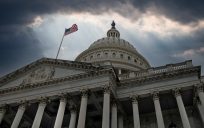The essay below has been selected as one of the 15 finalists for the GovLoop and NASPAA Scholarship program. To vote, simply sign in to your GovLoop account (Not a member yet? Sign up for free now!) and then click the big ‘Awesome’ button at the bottom of the post. Everyone is encouraged to vote for as many essays as they deem worthy, but only one vote is allowed per essay per profile, so don’t forget to tell your friends to offer their support as well!
 “Promise Neighborhoods for a Promising Future”
“Promise Neighborhoods for a Promising Future”
The last $100 million should fund the creation of ten additional Promise Neighborhoods. These proven initiatives target our nation’s most pressing urban problems: poverty, low student achievement, and child health. Studies show staggering empirical results, including the elimination of otherwise intransigent student achievement gaps. These investments would tap the potential of historically underserved Americans and catalyze the rejuvenation of our cities and our economy.
Promise Neighborhoods are modeled on the success of the Harlem Children’s Zone, which one Harvard researcher called the “most ambitious social experiment to alleviate poverty of our time.” Unlike most other interventions, the HCZ takes an inclusive cradle-to-career approach that provides training for families, community support services, and intensive educational programs. The impact is dramatic. HCZ raised student achievement in math an average of thirty-five percentage points, enough to close the black-white student achievement gap that has plagued this country since desegregation.
Because each child should have an opportunity to succeed, the racial achievement gap — which starts at age two — is a national disgrace. But it is also our greatest untapped potential. A more educated populace will spur innovation and create jobs. Increasing student success will decrease the nation’s widening inequality gap, with attendant improvements in crime, health, and levels of trust.
The Promise Neighborhoods initiative was launched in 2009 by the Department of Education, and currently plans to distribute $200 million through a competitive grant process. There is ample room for scaling upward, as only 21 of 339 applicants received grants in 2010. Our nation’s last $100 million could expand this successful program to ten new cities, bringing new hope to a new generation of Americans. The grants are few but large, to ensure a substantial impact in each neighborhood and a cost-effective use of remaining federal funds.
In a time of national crisis, it is tempting to provide temporary salve to those worst hurt by the economic downturn. But $100 million is insufficient to make a meaningful nationwide difference in areas like unemployment, foreclosure, and economic stimulus. Rather than inadequately mending the problems of today, we should invest in the promise of tomorrow.
__________________________________________________________________________________________________
Read other finalist essays for the GovLoop/NASPAA Scholarship.
– Mark Van Horn – “Using Computer Games to Simulate Policy Problems in the United States”
– Mauricio Cifuentes – “The Social Innovation Fund: Implementing Effective Bottom-up Solutions”
– Jay Sher – “Federal R&D Prizes for Technological Investment and Innovation”
– Danny Vasconcellos – “Government Getting it Right: The GAO”
– Kevin Sonoff – “Primary and Secondary Education: The Path to Recovery”
– Maggie Healy – “Funding the Information Age, Beyond Infrastructure”
– Joseph Towner – “Community Service Grants”
– Elizabeth Selbst – “Fund Local Land Banking to Reverse Urban Sprawl”
– Neil Patrick Reilly – “A Boost to Rentals and Public Housing”
– Lee Blum – “The World’s Best Vocational Institute”
– Brian Footer – “Local Government Grant Program”
– Peter Thomas – “Government Knowing Its Constituents”
– Daniel Turner – “Invest in the Future”
Don’t forget to VOTE for this essay by clicking the AWESOME BUTTON below.




You say, “Studies show staggering empirical results…” is there a source for this? Also, has the GAO audited the Promise Neighborhoods” program by the Dept of Ed?
Good question, Neil. Will Dobbie and Roland G. Fryer, Jr. did a randomized study on HCZ that found educational improvements that are far greater than most interventions of its kind. Here is the link: http://www.economics.harvard.edu/faculty/fryer/files/hcz%204.15.2009.pdf. David Brooks also wrote an op-ed summarizing the research’s main takeaways: http://www.nytimes.com/2009/05/08/opinion/08brooks.html. As for your second question, GAO has not yet audited Promised Neighborhoods, perhaps because of its recent vintage.
Fair enough. Promoted.. 🙂
Well played Evan. You got my vote too.
Excellent essay Evan. Congrats!
Damn you are an awesome writer Evan!!! Then again, you were raised in a LIBERAL, INTELLECTUAL, NON-FOX NEWS neighborhood!!!!!!!!!!!!!!!!!!!!!!!!!!!!!!!!!!!!!!!!!!!!!!!!!!!!!!! LOL I voted for you Buddy. GOOD LUCK! Dino
Great job Evan. I like the focus on educating our youth and your reference to HCZ. They are amazing organization that has made a considerable impact in NYC. Congrats, well deserved.